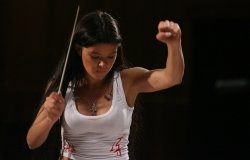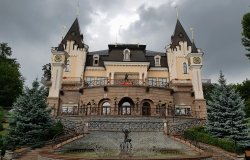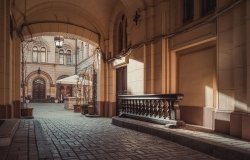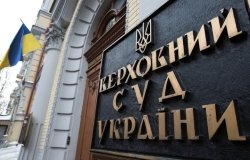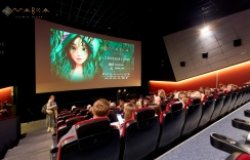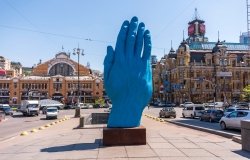
A blog of the Kennan Institute
Kyiv’s Puppet Company Provided Kyiv with Holiday Cheer
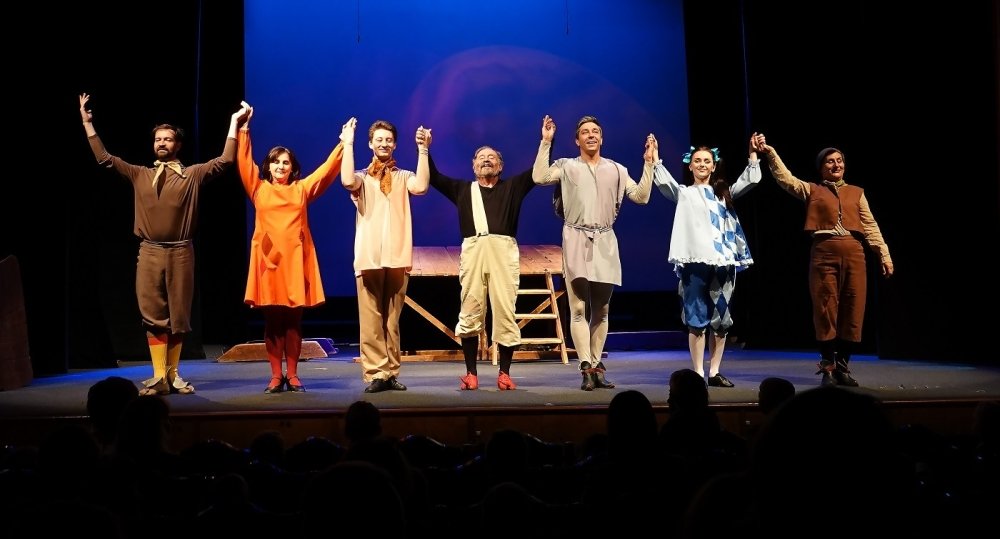
This past holiday season in Kyiv was unlike any other since Ukraine’s independence. New Year’s has long been the high point of the Ukrainian capital’s holidays. Elevated by the Bolsheviks in order to discourage the celebration of Christmas, the holiday appropriated all the trappings of the discarded fete: Grandfather Frost (who looks a great deal like Santa Claus), gift exchanges, family dinners, and a New Year’s tree (ialynka) looking every bit like a Christmas tree.
Religious celebrations continued, often surreptitiously, during the Soviet era. In a country of divided faith, such celebrations rarely coincided. Following independence, Protestants and Roman Catholics celebrated the birth of Christ on December 25, according to the Gregorian calendar. Orthodox Christians and Greek Catholics celebrate on January 7, per the Julian calendar. Anyone still looking to celebrate added “Old New Year’s” (another vestige of the Julian calendar falling on January 14, according to the Gregorian timetable). The especially playful might even recognize the Chinese Lunar New Year. Toss in the Jewish and Muslim calendars and the holidays indeed became a season.
This year was different, with the Ukrainian Orthodox Church and Ukrainian Greek Catholic Church celebrating Christmas on December 25 (Orthodox believers continuing to worship with the Moscow Patriarchate observe Christmas on January 7).
For over a century, “New” New Year’ offered the one moment for celebrations shared by all. New Year’s in Kyiv traditionally had been filled with light, entertainment, and loud, joyous celebrations. In 2015, a new official celebration area opened in the square in front of historic St. Sophia Cathedral (built in 1017-37) and the chain of small parks nearby. A giant, lighted ialynka presided over central Independence Square until this year.
Russian rocket assaults on power plants, electricity lines and transformers, public infrastructure, and civilians rendered such a holiday impossible this year. Bombs falling from the skies failed to obliterate all seasonal magic, however. The puppets and performers of the Kyiv Academic Puppet Theatre remained at home, displaying their craft in the company’s enchanting “Castle on the Mountain,” a few steps uphill from the city’s most central metro stations.
Founded in 1927, the company is Ukraine’s oldest puppet theater, established by the much-revered Iryina Deeva and Oleksandr Solomarskyi. The troupe has continued to provide entertainment for the city’s children and their parents in a period that has included genocidal famine, the Holocaust, world war, brutal repressions, and Putin’s unrelenting destructiveness. Over the decades, the puppet theater’s productions have provided a respite from the tensions of everyday life cherished by children and adults alike.
For many of its early years, the theater lacked official status and moved around, sustained by the energy of Deeva and Solomarskyi. Part of the grassroots movement to create a Ukrainian theater, the puppets and their masters eventually fell under the tight control of the People’s Commissariat of Education. The company moved around the city until the end of World War II, when it fell into the determined reach of Soviet cultural officials resolved to subdue all signs of cultural independence.
By the 1950s and 1960s, the theater connected with other youth theaters around the Soviet Union, entering into a productive partnership with the Leningrad Institute of Theater, Music, and Film in particular. For many years, the theater operated in what had been the Romanesque and Moorish revival Brodsky Choral Synagogue (opened 1898).
Following Ukrainian independence, Kyiv’s Jewish community reclaimed the synagogue, which now serves as home to the Chief Rabbi of Ukraine. The company moved to a fancifully restored Dnipro cinema, converted into a delightful fauxcastle near the Museum of Water on the river bluffs forming the gorgeous Khreshchatyy park.
The company quickly established its place within Kyiv’s exploding post-independence cultural scene, one rooted in part in the warm memories of childhood visits held close by Kyivan adults. Kyiv’s puppeteers expanded their international connections, hosting important puppetry festivals and participating in similar celebrations across Europe, North America, and Asia.
A martial law proclamation governed the theater once Russian forces crossed the Ukrainian border last year. Forced to go dark, the company released its artists and staff to support Ukraine’s military and civil defense efforts. Some company members headed to the front to fight; others sought refuge in western Ukraine and abroad. The theater turned its facilities over to authorities to use as a logistical coordinating point, even as actors and puppets performed for charity benefits, displaced children, and wounded soldiers. All the while, company members made plans to return to the stage. In late October, the theater announced that it would be opening its doors to audiences again, “no matter what!”
As the holidays approached and Russian attacks became more frequent and vicious, the company performed at noon on weekdays and at 11 in the morning and 3 in the afternoon on weekends. December’s bill featured multiple performances of Dmytro Drapikovsky’s “Moroz-Morozenko,” a 45-minute production full of snow, frost, and holiday bliss. Following New Year weekend, the company switched to performing Yuriy Sikalo’s new rendition of Charles Perrault’s Cinderella (Popelyushka). Running under an hour, the show’s magical ballroom setting made for an appropriate holiday celebration.
Creating illusions is never more important than at moments of existential threat. As the company of the Kyiv Academic Theatre reminded everyone this January, puppets—animated dolls which recall childhood for the old and create a new childhood for the young—enable performers and audiences to transcend their daily challenges and to renew their energy for the fight for their own humanity once the holiday, and the show, is over.
The opinions expressed in this article are those solely of the author and do not reflect the views of the Kennan Institute.
See our newest content first.
Subscribe to receive the latest analysis from Focus Ukraine.
About the Author

Blair A. Ruble
Former Wilson Center Vice President for Programs (2014-2017); Director of the Comparative Urban Studies Program/Urban Sustainability Laboratory (1992-2017); Director of the Kennan Institute for Advanced Russian Studies (1989-2012) and Director of the Program on Global Sustainability and Resilience (2012-2014)

Kennan Institute
The Kennan Institute is the premier US center for advanced research on Eurasia and the oldest and largest regional program at the Woodrow Wilson International Center for Scholars. The Kennan Institute is committed to improving American understanding of Russia, Ukraine, Central Asia, the South Caucasus, and the surrounding region though research and exchange. Read more


